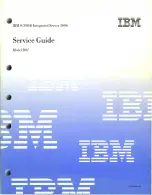
Rev. 1.50
13�
����st ��� �01�
Rev. 1.50
139
����st ��� �01�
HT66F0175/HT66F0185
A/D Flash MCU with EEPROM
HT66F0175/HT66F0185
A/D Flash MCU with EEPROM
SIMD Register
The SIMD register is used to store the data being transmitted and received. The same register is used
by both the SPI and I
2
C functions. Before the device writes data to the I
2
C bus, the actual data to
be transmitted must be placed in the SIMD register. After the data is received from the I
2
C bus, the
device can read it from the SIMD register. Any transmission or reception of data from the I
2
C bus
must be made via the SIMD register.
Bit
7
6
5
4
3
2
1
0
Name
D�
D6
D5
D4
D3
D�
D1
D0
R/W
R/W
R/W
R/W
R/W
R/W
R/W
R/W
R/W
POR
x
x
x
x
x
x
x
x
“x”: �nknown
SIMA Register
The SIMA register is also used by the SPI interface but has the name SIMC2. The SIMA register is
the location where the 7-bit slave address of the slave device is stored. Bits 7~1 of the SIMA register
define the device slave address. Bit 0 is not defined.
When a master device, which is connected to the I
2
C bus, sends out an address, which matches the
slave address in the SIMA register, the slave device will be selected. Note that the SIMA register is
the same register address as SIMC2 which is used by the SPI interface.
Bit
7
6
5
4
3
2
1
0
Name
IIC�6
IIC�5
IIC�4
IIC�3
IIC��
IIC�1
IIC�0
D0
R/W
R/W
R/W
R/W
R/W
R/W
R/W
R/W
R/W
POR
x
x
x
x
x
x
x
x
“x”: �nknown
Bit 7~1
IICA6~IICA0
: I
2
C slave address
IICA6~IICA0 is the I
2
C slave address bit 6 ~ bit 0
Bit 0
Undefined bit
The bit can be read or written by the application program.
There are also three control registers for the I
2
C interface, SIMC0, SIMC1 and SIMTOC. The
register SIMC0 is used to control the enable/disable function and to set the data transmission
clock frequency.The SIMC1 register contains the relevant flags which are used to indicate the I
2
C
communication status. The SIMTOC register is used to control the I
2
C bus time-out function which
is described in the I
2
C Time-out Control section.
















































